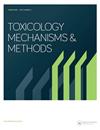hepg2细胞培养融合测量相衬显微镜-一个用户友好的,开源软件为基础的方法
IF 2.8
4区 医学
Q2 TOXICOLOGY
引用次数: 5
摘要
相衬显微照片常用于确认增殖和活力测定。然而,它们通常只是一种定性工具,不能确定地排除测试物质对分析的干扰。图像分析工作流程的复杂性阻碍了生命科学家对显微图像数据的常规利用。在这里,我们提出了一种基于开源软件的,结合ilastik分割/ImageJ面积测量(ISIMA)方法,用于hepg2细胞的细胞单层分割和相对比显微照片的融合百分比测量。本研究的目的是测试所提出的方法是否适用于3-(4,5-二甲基-2-噻唑基)-2,5-二苯基- 2h -溴化四唑(MTT)试验获得的增殖数据的定量确认。我们的结果表明,ISIMA是用户友好的,并提供可重复的数据,这与MTT分析的结果密切相关。总之,对于没有图像分析背景的研究人员来说,ISIMA是一种经济、简单、快速的合流定量方法。本文章由计算机程序翻译,如有差异,请以英文原文为准。
Hep G2 cell culture confluence measurement in phase-contrast micrographs – a user-friendly, open-source software-based approach
Abstract Phase-contrast micrographs are often used for confirmation of proliferation and viability assays. However, they are usually only a qualitative tool and fail to exclude with certainty the presence of assay interference by test substances. The complexity of image analysis workflows hinders life scientists from routinely utilizing micrograph data. Here, we present an open-source software-based, combined ilastik segmentation/ImageJ measurement of area (ISIMA) approach for cell monolayer segmentation and confluence percentage measurement of phase-contrast micrographs of Hep G2 cells. The aim of this study is to test whether the proposed approach is suitable for quantitative confirmation of proliferation data, acquired by the 3-(4,5-Dimethyl-2-thiazolyl)-2,5-diphenyl-2H-tetrazolium bromide (MTT) assay. Our results show that ISIMA is user-friendly and provides reproducible data, which strongly correlates to the results of the MTT assay. In conclusion, ISIMA is an affordable, simple, and fast approach for confluence quantification by researchers without image analysis background.
求助全文
通过发布文献求助,成功后即可免费获取论文全文。
去求助
来源期刊

Toxicology Mechanisms and Methods
TOXICOLOGY-
自引率
3.10%
发文量
66
期刊介绍:
Toxicology Mechanisms and Methods is a peer-reviewed journal whose aim is twofold. Firstly, the journal contains original research on subjects dealing with the mechanisms by which foreign chemicals cause toxic tissue injury. Chemical substances of interest include industrial compounds, environmental pollutants, hazardous wastes, drugs, pesticides, and chemical warfare agents. The scope of the journal spans from molecular and cellular mechanisms of action to the consideration of mechanistic evidence in establishing regulatory policy.
Secondly, the journal addresses aspects of the development, validation, and application of new and existing laboratory methods, techniques, and equipment. A variety of research methods are discussed, including:
In vivo studies with standard and alternative species
In vitro studies and alternative methodologies
Molecular, biochemical, and cellular techniques
Pharmacokinetics and pharmacodynamics
Mathematical modeling and computer programs
Forensic analyses
Risk assessment
Data collection and analysis.
 求助内容:
求助内容: 应助结果提醒方式:
应助结果提醒方式:


